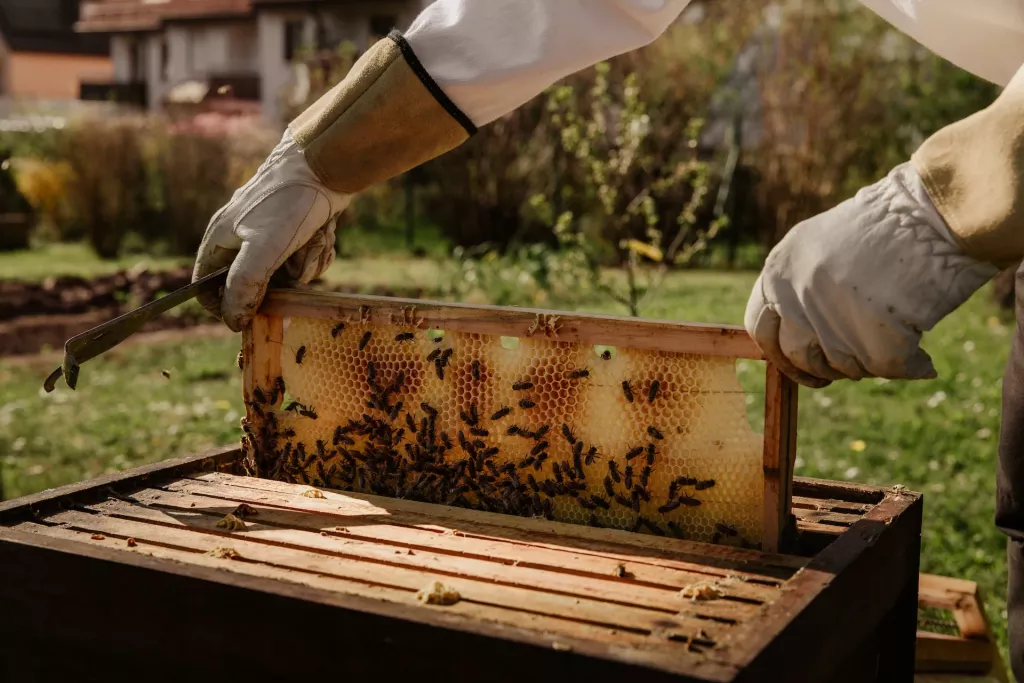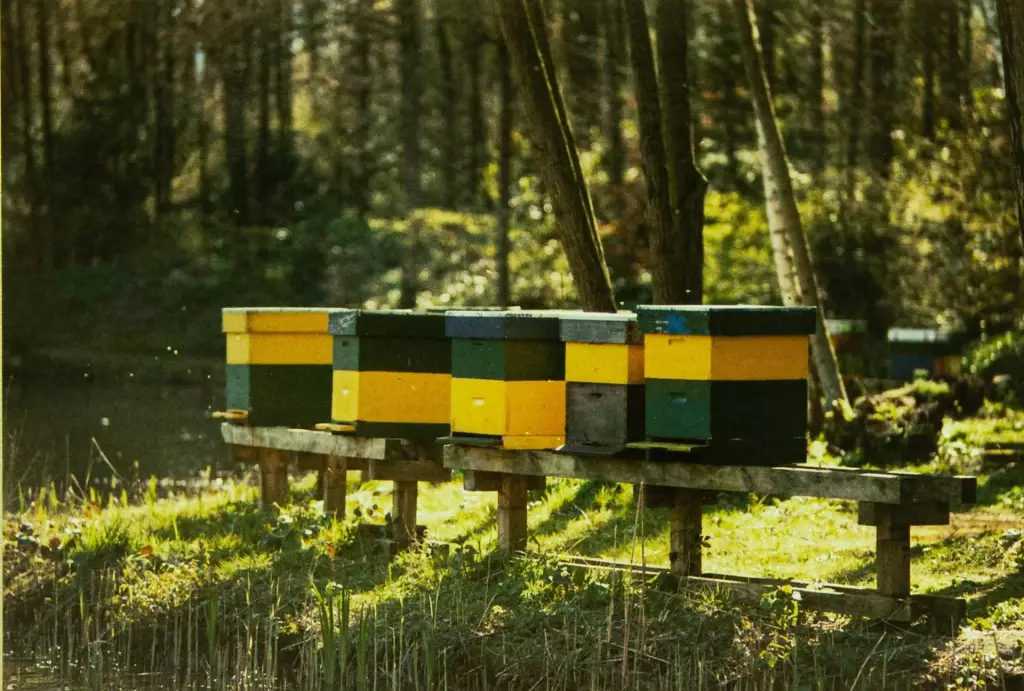How Far Should a Beehive Be From Your House?
How far should your beehive be from your house? Here's how your honeybees can thrive in their homes while you and your loved ones can relax in yours.
Orientation, not just distance, matters. Bee colonies with a gentle disposition will need at least four feet of clearance on each side and behind their hive. The hive entrance should be the most clear, offering 25 feet of free flight for your busy workers.
Setting up a backyard apiary is no easy feat. You need to consider your neighbors, the local flora, and the size of your available space. Thankfully, there are plenty of ways to maximize different settings for an apiary—read on to find out how.
Summary
- Bees need at least four feet of clearance on both sides and behind the hive, while the front of the hive should offer a clear flying path that stretches at least 25 feet.
- Budding beekeepers living in urban areas can still set up apiaries, provided that they have the space and the consent of their neighbors.
- Backyard beehives are subject to different state, municipal, or county regulations and fees, which you can find out by asking your local Beekeepers' Association

On this page:
How to Optimize Your Apiary
While some insects can be domesticated, like spiders, ants, and centipedes, honey bees are wild creatures at heart. Even the most experienced beekeepers may find themselves in dangerous and unexpected situations with their hives. One way to minimize risk for everyone involved is to set up your backyard apiary in an area of your property that's conducive to their growth.
If you live in an urban residential area, you may need to be more mindful of how your bee colonies affect your neighbors and other animals in the vicinity. However, beekeeping is still possible in these locations.
Bees will forage three to five miles in radius around the colony. The less distance they need to travel, the lower their stress levels. Here's what you need to keep in mind so that your bees have a safe space to thrive in, no matter where you are based.
Set Up a Wind Barrier
Honeybees do not forage on windy days, especially if the wind is stronger than 12 mph. Over time, a bee's wings will also start tearing from the stress of constant flight. The harder it is to fly, the sooner they develop wear and tear on their wings. This is why their colonies need to be placed in an area with a wind break on the northern side, which is where most winds in the country originate.. If you do not have natural resources like trees, bushes, or shrubbery, then a fence will do the trick.
Have Hives Face the Southeast
The sun rises from the southeast and bees will wait until the hive becomes warm before they start working for the day. If the hive entrance is oriented towards this direction, then they can rise alongside the early morning sun and do more with their day.

Find Food and Water
Bees need water and a variety of flora to feed themselves, grow their colony, and create hive products. They're willing to travel great distances just to get to the nearest food source. Unfortunately, this could also mean that they travel great distances and end up spending more energy than they gain from the food they find. Gardens and fields are a great source of nourishment--you don't need to set up the apiary right next to them, especially if it's an area with constant human presence, but it's best that they have a clear path to the flora from the hive entrance.
If you do not have a natural source of water nearby, you can set up a birdbath. Even a small water pot filled with pebbles for smoother landing and takeoff will do the trick.
With that said, you need to be mindful of how bees may swarm neighbors who have pools in their backyards. The simplest method to keeping them away is to make sure they have a water source to draw from before they reach the pool.
Make Sure The Hive Stands on Dry, Level Ground
Setting up on dry ground helps eliminate two big threats to hive health and growth: moisture and pests. A level hive is important because honeybees build out their honeycomb straight down, according to the pull of gravity. Wild bees don't mind whether they have neat, organized combs, but it's important for beekeepers because they need to maintain order and have the bees stay on the frames provided.
Steer Clear of Hills and Valleys
Cold air usually settles in valleys, which can drastically reduce your bees' chances of survival. Conversely, setting up on top of a hill leaves the hives prone to upward wind drafts.
On your end, hive products and bee boxes are heavy. You'll have to put in more work when transporting them up and down hills and valleys.
Don't Set Up in Busy Areas
Even the nicest bees may feel threatened by constant human presence and become aggressive. It's a part of their nature. New beekeepers who live in densely populated communities should make plenty of effort to keep them out of harms way. This means making sure that they have at least 20 feet of space so that they can reach their preferred flying altitude without running into other people or animals, and making sure that the hive entrances do not open out to a nearby solid object like trees or fences.
Keep Hives Off the Ground
Honeybees instinctively choose to build their hives in high places. This helps them protect the colony from small animals and other pests. It also keeps out ground moisture and allows you to work without having to strain your back. Buildings with flat roofs are a great place to set up hives, and it's also a big reason behind why beekeepers who are based in the city can still thrive. If you don't have a rooftop to work with, keeping your hives raised 18 inches off the ground will do the trick. You can use cinder blocks if you do not want to invest in hive stands.
Install an Electric Fence
Setting up an apiary in bear country? In this scenario, electric fences are a non-negotiable. You need to install the fence before you hive your bees because bears will wreak havoc on your colonies, especially if they know that they've got something tasty waiting for them just beyond the threat of electrocution. They will tear it apart to eat the bee brood and honey inside.
How to Make Beekeeping Easier For You

Leave 5 Feet in Between Hives
You need to be capable of seeing all your hives in one glance and walking around them as you conduct your inspections. Five feet also minimizes the risk of drift, which happens when bees enter a hive that isn't their own. In this situation, they may get killed by the guards.
Painting each hive different colors can help you and your bees differentiate between colonies as well.
Be Mindful of the Seasons
Your local climate plays a big factor in the behavior of bees. After all, bees need to spend their entire year preparing for winter. While the cold hasn't set in yet, observe how soon the dawn breaks in your area and where your yard experiences full sun. The hive should be placed in those locations. The warmth alerts the forager bees and encourages them to get out of the hive earlier.
If you live in the Northeast part of the US, it is okay for hives to remain under the sun throughout the summer. However, hives that are set up in warmer climates should receive a little afternoon shade. Too much heat may cause the colony to swarm or abscond--and in the worst case, the wax combs could melt and kill the bees.
Make Your Hives Accessible
Beekeeping is a very hands-on activity. Part of the job may have you moving colonies and hive products from one location to another. Avoid making things more difficult than they should be by setting up in a location that is easily accessible by a vehicle.
Keep the Area Clean
Old honeycomb, dead hives, broken equipment, old wax, and more--beekeeping create a lot of waste products and it will be your responsibility to keep the area clean. This is not just for the bees' benefit, but for yours as well.4
How to Set Up a Legally Compliant Backyard Apiary
Fees and registration for setting up a beehive vary by state--and even if you don't need to register with your state, you may need to do so with your municipality or county. This link has a quick guide to registering hives in all 50 states.